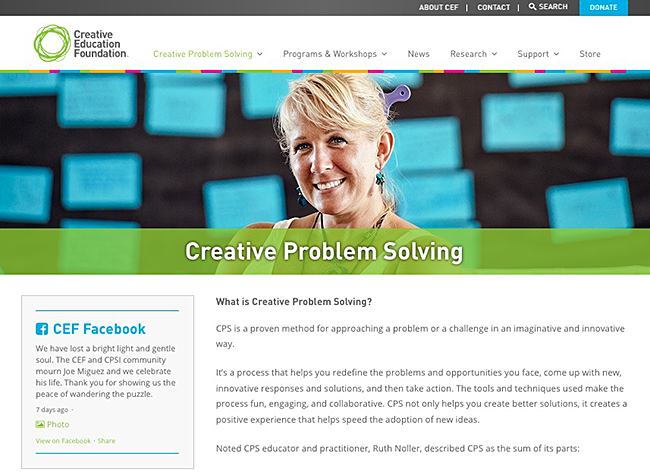Creative Problem Solving
Background: Although the creative problem-solving process is as old as humanity, the formal and definitive presentation of its structure emerged in the 1950s with the research of Alex Osborn and Sidney Parnes. They divided the process of solving problems into six stages:
- Objective Finding
- Fact Finding
- Problem Finding
- Idea Finding
- Solution Finding
- Acceptance Finding

They further divided the six stages into three phases, as follows: 1. Exploring the Challenge (Objective Finding, Fact Finding, and Problem Finding), Generating Ideas (Idea Finding), and Preparing for Action (Solution Finding and Acceptance Finding).
Description:
Since the arrival of the now classical Osborn-Parnes structure, any number of academic and business entities have re-sorted and renamed the stages and phases of what we now call the Creative Problem Solving Process (CPS). However, the originators' fundamental approach remains in tact.
The Creative Problem Solving Institute of Buffalo, New York, has finessed the Osborn-Parnes process to include a divergent and a convergent stage within each of the six stages.
In his 1988 book, Techniques of Structured Problems, Arthur B. VanGundy offered a more elaborate structre and a more approachable nomenclature, providing specific thinking techniques or exercises for the convergent and divergent steps of each stage.
- Mess Finding
- Data Finding
- Problem Finding
- Idea Finding
- Solution Finding
Where to Learn CPS
- Creative Education Foundation
- International Center for Studies in Creativity
- Creative Problem Solving Institute
